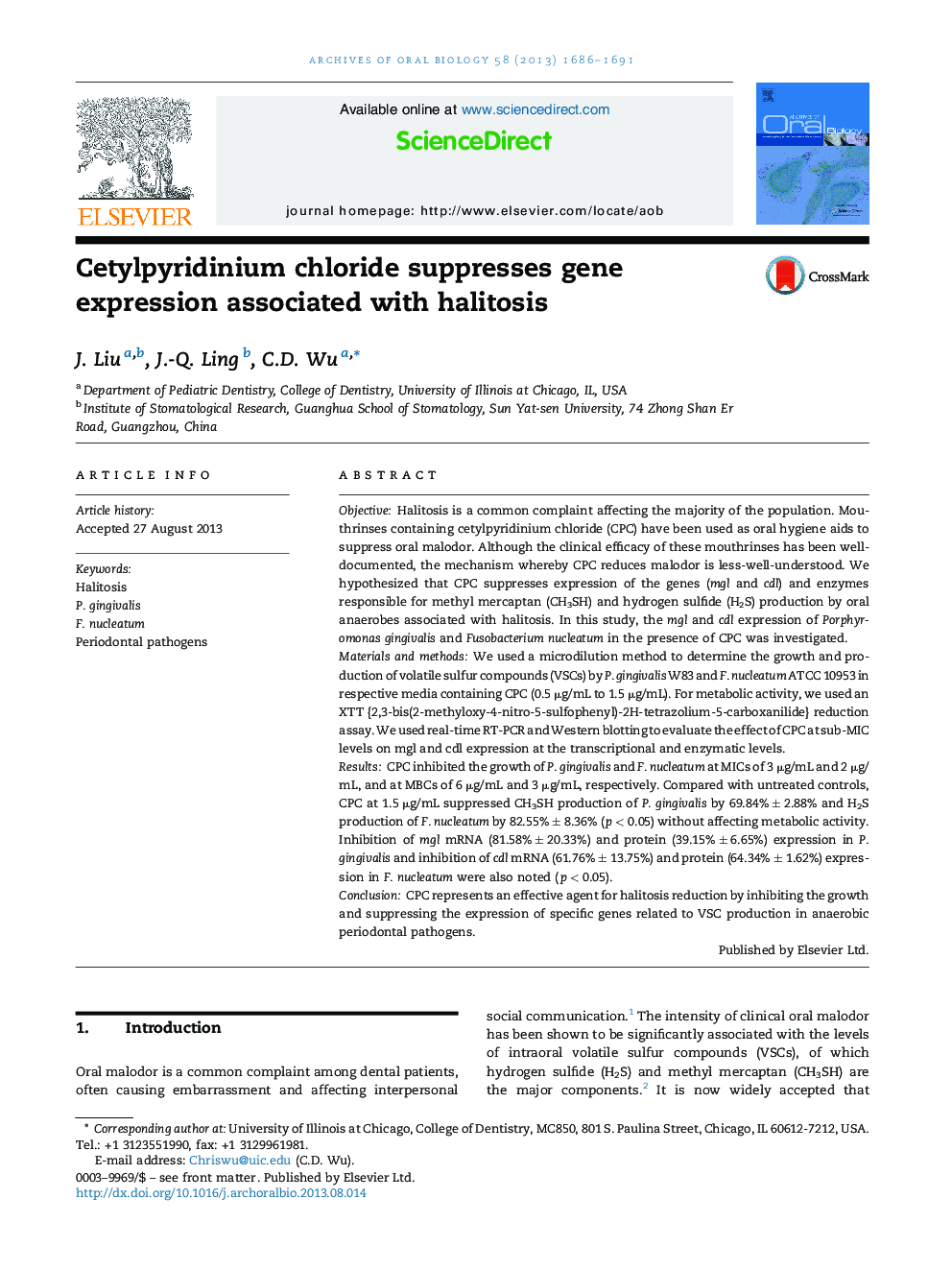| Article ID | Journal | Published Year | Pages | File Type |
|---|---|---|---|---|
| 6051289 | Archives of Oral Biology | 2013 | 6 Pages |
ObjectiveHalitosis is a common complaint affecting the majority of the population. Mouthrinses containing cetylpyridinium chloride (CPC) have been used as oral hygiene aids to suppress oral malodor. Although the clinical efficacy of these mouthrinses has been well-documented, the mechanism whereby CPC reduces malodor is less-well-understood. We hypothesized that CPC suppresses expression of the genes (mgl and cdl) and enzymes responsible for methyl mercaptan (CH3SH) and hydrogen sulfide (H2S) production by oral anaerobes associated with halitosis. In this study, the mgl and cdl expression of Porphyromonas gingivalis and Fusobacterium nucleatum in the presence of CPC was investigated.Materials and methodsWe used a microdilution method to determine the growth and production of volatile sulfur compounds (VSCs) by P. gingivalis W83 and F. nucleatum ATCC 10953 in respective media containing CPC (0.5 μg/mL to 1.5 μg/mL). For metabolic activity, we used an XTT {2,3-bis(2-methyloxy-4-nitro-5-sulfophenyl)-2H-tetrazolium-5-carboxanilide} reduction assay. We used real-time RT-PCR and Western blotting to evaluate the effect of CPC at sub-MIC levels on mgl and cdl expression at the transcriptional and enzymatic levels.ResultsCPC inhibited the growth of P. gingivalis and F. nucleatum at MICs of 3 μg/mL and 2 μg/mL, and at MBCs of 6 μg/mL and 3 μg/mL, respectively. Compared with untreated controls, CPC at 1.5 μg/mL suppressed CH3SH production of P. gingivalis by 69.84% ± 2.88% and H2S production of F. nucleatum by 82.55% ± 8.36% (p < 0.05) without affecting metabolic activity. Inhibition of mgl mRNA (81.58% ± 20.33%) and protein (39.15% ± 6.65%) expression in P. gingivalis and inhibition of cdl mRNA (61.76% ± 13.75%) and protein (64.34% ± 1.62%) expression in F. nucleatum were also noted (p < 0.05).ConclusionCPC represents an effective agent for halitosis reduction by inhibiting the growth and suppressing the expression of specific genes related to VSC production in anaerobic periodontal pathogens.
